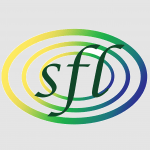Laboratorium Fotosyntezy i Paliw Słonecznych
 Profil Kierownik Zespół Projekty Publikacje Kontakt Media Gra edukacyjna Strona www |
Profildr hab. Joanna Kargul, prof. ucz. W Laboratorium Fotosyntezy i Paliw Słonecznych prowadzimy zaawansowane badania biochemiczne, biofizyczne i elektochemiczne nad pierwotnymi procesami konwersji energii słonecznej w wysokostabilinych makromolekularnych kompleksach pigmentowo-bialkowych: fotosystemie I (PSI) i fotosystemie II (PSII). Głównym celem tych fundamentalych badań jest określeniem molekularnych mechanizmów fotoprotekcji aparatu fotosyntetycznego w modelowych ekstremofilnych mikroalgach (C. merolae, T. elongatus itp.) poddanych działaniu ekstremalnych bodźców środowiskowych. Równolegle, zajmujemy się konstrukcją fotoogniw paliwowych zbudowanych z biologicznych i biomimetycznych katalizatorów do utleniania wody i wytwarzania tzw. paliw słonecznych (wodoru i odnawialnych paliw węglowych) pod wpływem absorpcji światła widzialnego. Prace te mają charakter wysoce interdyscyplinarny i prowadzone są w ramach międzynarodowych konsorcjów EuroSolarFuels/Solarfueltandem (lata 2011-2014) oraz PolTur/GraphESol (lata 2016-obecnie) zrzeszających czołowe laboratoria naturalnej i sztucznej fotosyntezy. Używamy metod biochemicznych (AEC, IMAC, SEC, BN-PAGE, Western blotting, frakcjonowanie na gradientach sukrozowych itp.), biologii molekularnej, spektroskopii absorpcyjnej i fluorescencyjnej, bioinformatyki, elektrochemii oraz metod inżynierii materiałowej do syntezy substratów elektrodowych o ściśle określonej nanoarchitekturze. |
||||||||||||||||||||||||||||||||||||||||||||
KierownikKierownik Laboratorium Paliw Słonecznych w Centrum Nowych Technologii Uniwersytetu Warszawskiego. Tytuł doktora nauk biologicznych uzyskała w 1999 r. na Uniwersytecie w Warwick w Wielkiej Brytanii. Jej badania podoktorskie prowadzone w grupie Jamesa Barbera w Imperial College London w Wielkiej Brytanii doprowadziły do odkrycia nowych molekularnych mechanizmów adaptacji fotosyntezy do zmieniającego się środowiska (m.in. analiza molekularnych składników przejść stanowych) oraz udoskonalenia struktury krystalograficznej kompleksu ewolucji tlenu PSII. Habilitacja w 2009 roku na Uniwersytecie Warszawskim (UW). Od 2011 roku profesor nadzwyczajny po założeniu niezależnej grupy badawczej na UW. W 2011 r. prof. Kargul utworzyła sieć badań nad paliwami słonecznymi w Polsce i kierowała kilkoma projektami dotyczącymi zastosowania wytrzymałych nanomaszyn molekularnych zbierających naturalne światło do budowy biohybrydowych ogniw słonecznych i urządzeń typu solar-to-fuel. Ma bogate doświadczenie i sukcesy w kierowaniu kilkoma krajowymi i międzynarodowymi inicjatywami (np. partner założyciel konsorcjów ESF EuroSolarFuels i H2020 SUNRISE; członek zarządu naukowego inicjatywy badawczo-rozwojowej na dużą skalę SUNERGY), a także koordynator / lider pakietu roboczego projektów UE (np. konsorcjów POLTUR / GraphESol, Solar-driven chemistry / SUNCOCAT i Horizon Europe CL5 / SUNGATE), które koncentrowały się na naturalnych i hybrydowych systemach konwersji energii słonecznej. Pełni funkcję międzynarodowego ambasadora Brytyjskiego Towarzystwa Biochemicznego i zasiadała w kilku redakcyjnych i strategicznych radach wykonawczych, m.in. jako członek Scientific Advisory Board European Society for Photobiology, Scientific Advisory Board European Materials Research Society, Senior Editor International Journal of Biochemistry and Cell Biology, członek Grants Committee Biochemical Society (UK), ekspert programu NAWA polskiego Ministerstwa Nauki i Szkolnictwa Wyższego, ekspert w Panelu NZ1 Narodowego Centrum Nauki, członek Rady Doradczej Europejskiego Zielonego Ładu, członek Grupy Roboczej KIS4 polskiego Ministerstwa Rozwoju i Technologii i innych. Wysoce interdyscyplinarne badania prof. Kargul obejmują biologię strukturalną, biochemię i fizjologię roślin z elektrochemią, biofizyką i chemią materiałów. W swoich obecnych badaniach koncentruje się na strukturalnych i mechanistycznych aspektach funkcji i adaptacji naturalnego aparatu fotosyntetycznego w ekstremofilnych biofotokatalizatorach. Wraz ze swoją grupą wykorzystuje tę podstawową wiedzę do racjonalnej budowy biomolekularnych urządzeń do konwersji energii słonecznej na paliwo w celu optymalizacji konwersji energii słonecznej poprzez inteligentne połączenie fotoenzymów, enzymów redukujących CO2 i katalizatorów molekularnych z różnymi nanostrukturalnymi materiałami elektrodowymi. |
|||||||||||||||||||||||||||||||||||||||||||||
ZespółKierownik Postdocy Doktoranci Studenci Alumni: |
|||||||||||||||||||||||||||||||||||||||||||||
Wybrane projekty
|
|||||||||||||||||||||||||||||||||||||||||||||
Wybrane publikacje
|
|||||||||||||||||||||||||||||||||||||||||||||
Kontaktdr hab. Joanna Kargul, prof. ucz. |
|||||||||||||||||||||||||||||||||||||||||||||
MediaFirst Meeting of SUNRISE Stakeholders during EU Sustainable Energy Week SUNRISE Poland Stakeholder Workshop SUNRISE won the Horizon 2020 Grant Laboratorium Fotosyntezy i Paliw Słonecznych na DOKO2017. Polacy pracują nad biohybrydową elektrodą. Nowa technologia pozwoli na produkcję paliwa wodorowego. Sztuczny liść: fotosynteza ulepszona przez technologie. Czym jest sztuczna fotosynteza? – Prof. Joanna Kargul wyjaśnia w krótkim clipie. Solar compounds form artificial leaves: companies and scientists mobilise to improve photosynthesis. Full article here. Molecular mechanisms of photosynthesis in extreme environmental conditions Wywiad z professor Joanną Kargul Sztuczna fotosynteza bardziej wydajna? Polacy mają na to pomysł | Nauka w Polsce https://nauka.tvp.pl/56125767/polska-technologia-wspomaga-sztuczna-fotosynteze |
|||||||||||||||||||||||||||||||||||||||||||||
Gra edukacyjnaThe description of SFL Escape Room educational game (ENG) |